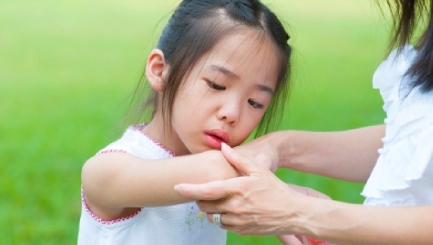What Types of Juvenile Arthritis Affect Children?
 Juvenile arthritis affects around 12,000 children in the UK, causing inflammation, pain and swelling in the joints. While the causes of juvenile arthritis are not known, most children will respond to treatment and not suffer long-term damage to their joints.
Juvenile arthritis affects around 12,000 children in the UK, causing inflammation, pain and swelling in the joints. While the causes of juvenile arthritis are not known, most children will respond to treatment and not suffer long-term damage to their joints.
There are five different types of juvenile arthritis, usually referred to as juvenile idiopathic arthritis, and the type diagnosed will depend upon the symptoms present. The five types are: oligoarticular, systemic onset, polyarticular, psoriatic juvenile arthritis and spondyloarthropathy.
The most common form of juvenile idiopathic arthritis (JIA) is oligoarticular, which affects four or fewer joints in the body – typically ankle, knee, elbow or wrist. The symptoms include painful and swollen joints, while eye problems can also be evident. This eye inflammation is known as uveitis and needs to be treated quickly or it can lead to blindness. If your child is diagnosed with oligoarticular arthritis, they are unlikely to suffer problems with the bone growth or deformed joints that can affect those with other forms of JIA. However, while it may go into remission, the possibility remains that the condition will flare up again in later life.
Systemic onset JIA is demonstrated by such systemic symptoms as fevers, lethargy, rashes and enlarged glands – the early signs of the condition often begin with an infection. Systemic onset JIA usually strikes in children under the age of five who will also have joint and muscle pain, and tiredness. Sufferers can sometimes go on to develop complications such as myocarditis (inflammation of the heart) and pleuritis (inflammation of the tissue lining the chest cavity and lungs).
Polyarticular JIA affects more than five joints in a child and usually starts before the age of seven or later in childhood when the condition is much more severe. More girls than boys will be affected by polyarticular JIA and they will show symptoms such as stiffness and pain in the joints, tiredness and eye inflammation. Other symptoms to look out for are fever and rash, and a loss of appetite. The condition can affect bone growth, usually in the legs.
Spondyloarthropathy and psoriatic juvenile arthritis are very rare in children. Boys over the age of eight are more likely to develop spondyloarthropathy, which affects the knees and ankles. Psoriatic juvenile arthritis affects the spine, hips, fingers and toes but can spread to other joints.


Comments are closed.